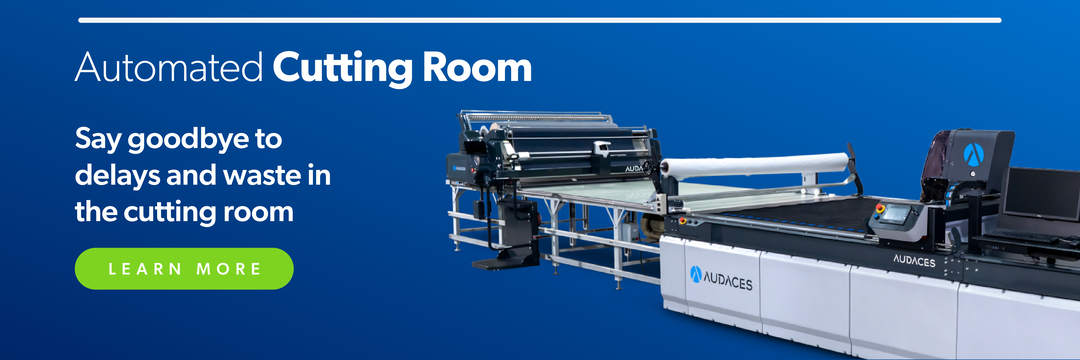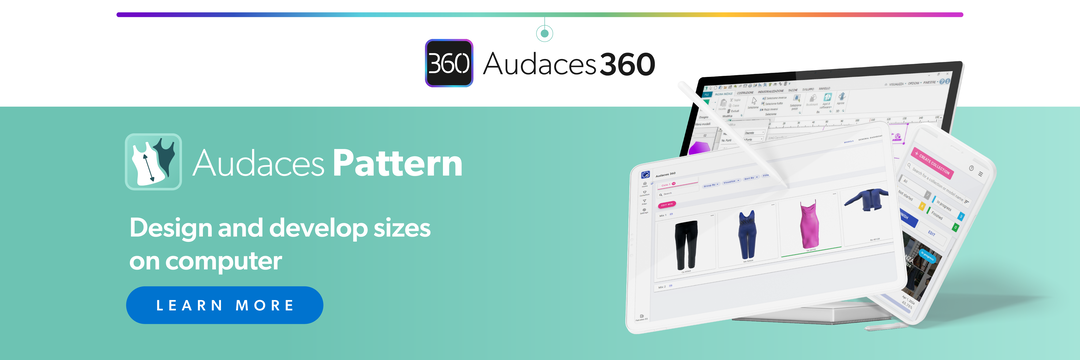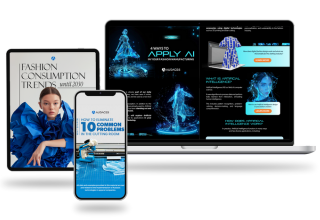Summary
- Camouflage prints continue to influence fashion, evolving far beyond their military origins.
- Designers use different variations to create distinctive garments, from streetwear to high fashion.
- Get monthly fashion insights straight to your inbox. Subscribe to our newsletter!
Camouflage prints are one of the most iconic patterns in fashion. Originally created for practical use in military uniforms, camo eventually crossed into civilian clothing and became a cultural symbol.
Today, it appears in streetwear, casual fashion, couture pieces, and even luxury collaborations. Its versatility makes it a valuable resource for designers looking to add depth, boldness, or attitude to a garment.
Throughout this blog post, you’ll find the main types of camouflage prints and understand where each one fits best.
Happy reading!
Sumário
What is camouflage print?
Camouflage print is a pattern originally designed to help military uniforms blend into different natural environments. The purpose was functional and strategic, allowing soldiers to move with discretion and avoid visual detection.
As fashion evolved, camouflage began appearing beyond its original context. It first entered civilian use through surplus clothing and subcultures like punk, grunge, and streetwear. These movements embraced camo not just for aesthetics, but as a symbol of rebellion, utility, and attitude.
Today, designers reinterpret the pattern with color, scale, texture, and unexpected silhouettes.
Main types of camouflage prints
Take a look at the key patterns designers are featuring:
Woodland

This is one of the most recognizable forms of camo. It combines greens, browns, and blacks to replicate natural forest tones. The shapes usually flow organically, inspired by leaves, shadows, and irregular terrain textures.
It’s common in jackets, cargo pants, and utility styles, especially in casual and sportswear markets.
Urban
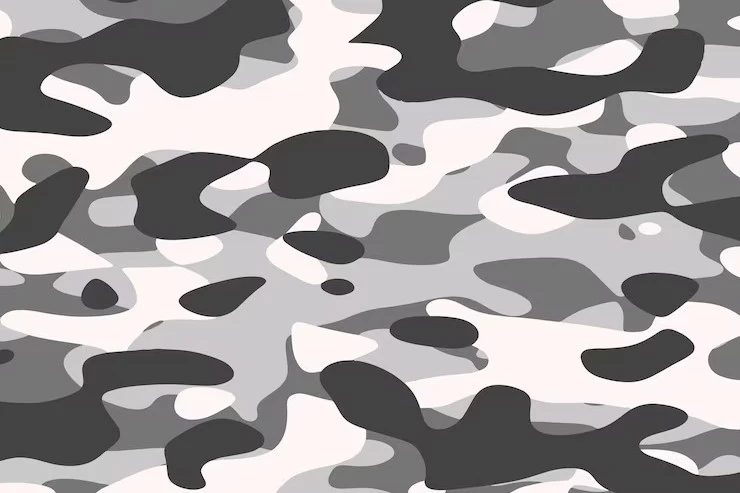
It was originally developed for city environments and features neutral shades like gray, black, white, or muted blue. Its shapes are often sharper and more geometric compared to traditional nature-inspired patterns.
In fashion, this style aligns well with a streetwear aesthetic, giving garments a modern and edgy feel.
Because of its neutral palette, urban camo is highly versatile.
Digital
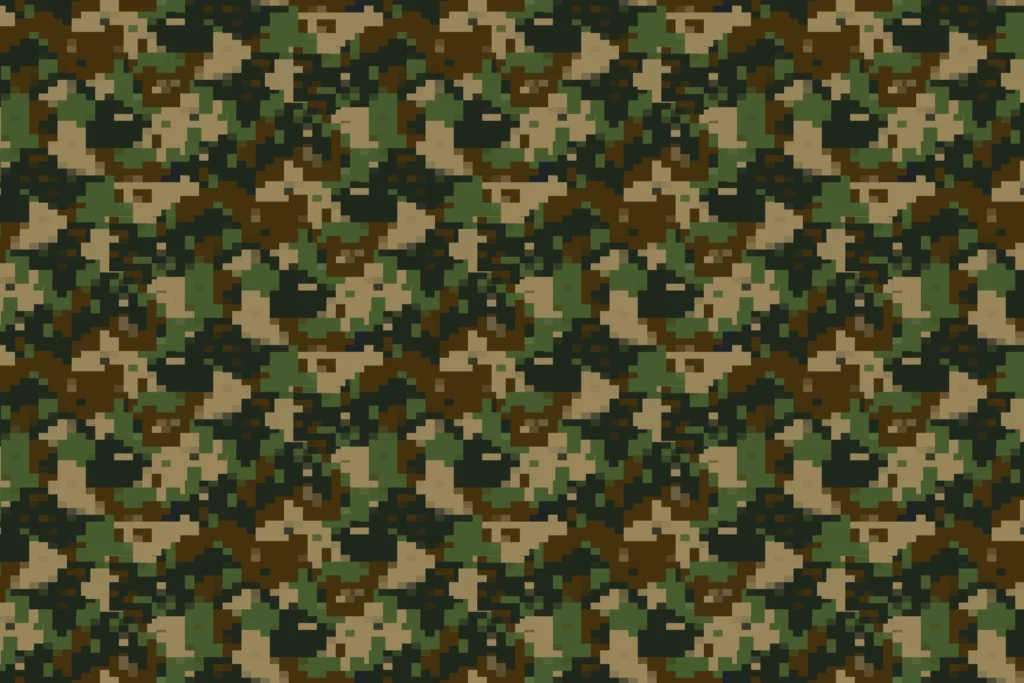
This pattern uses tiny pixel-like shapes instead of organic forms. The idea is that digital noise patterns could be more effective at disrupting visibility. Its look is more technical and structured than traditional camo.
Digital camouflage brings a futuristic and tech-inspired style, pairing well with performance fabrics, outerwear, and tactical silhouettes.
Chocolate chip
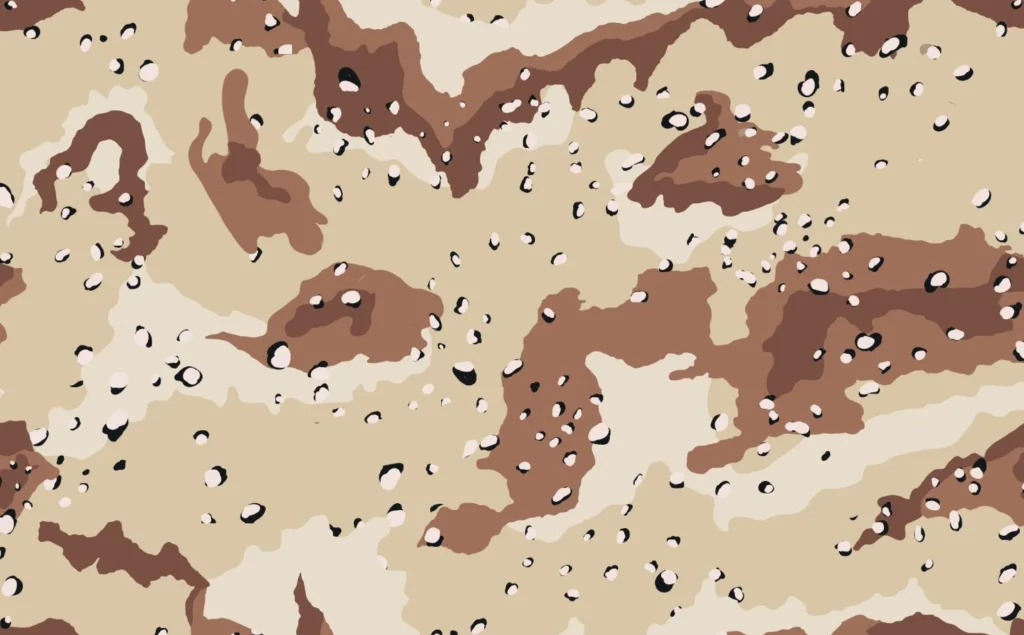
Chocolate chip features beige and brown tones with black or white spots resembling pebbles or sand texture. The name comes from the dotted pattern that looks similar to cookie chips.
The style carries a vintage military energy because of its association with historical designs. It works well on jackets, utility vests, and structured silhouettes.
Multicam

It features smooth transitions of green, tan, and brown tones without strong contrast lines. This gives the print a blended effect that molds easily into natural surroundings.
Multicam brings a softer take on classic camo aesthetics. The color harmony makes it easier to style with both muted and bold elements in a collection.
Looking to see how technology can assist your creative process? Download our exclusive resource and learn how to apply Artificial Intelligence in fashion!
Best-selling garments with camouflage print
Here’s where camouflage truly proves its versatility. Some garments consistently stand out in sales because the print adapts perfectly to their shape and purpose:
T-shirt

Camouflage T-shirts are one of the most accessible ways for consumers to wear the print. They can look bold or discreet depending on the color palette, scale, and style.
Designers often use camo T-shirts as entry-level products in a collection. They work well as statement pieces or layering items and are easy to style with denim, joggers, or neutral basics.
Jogger pants
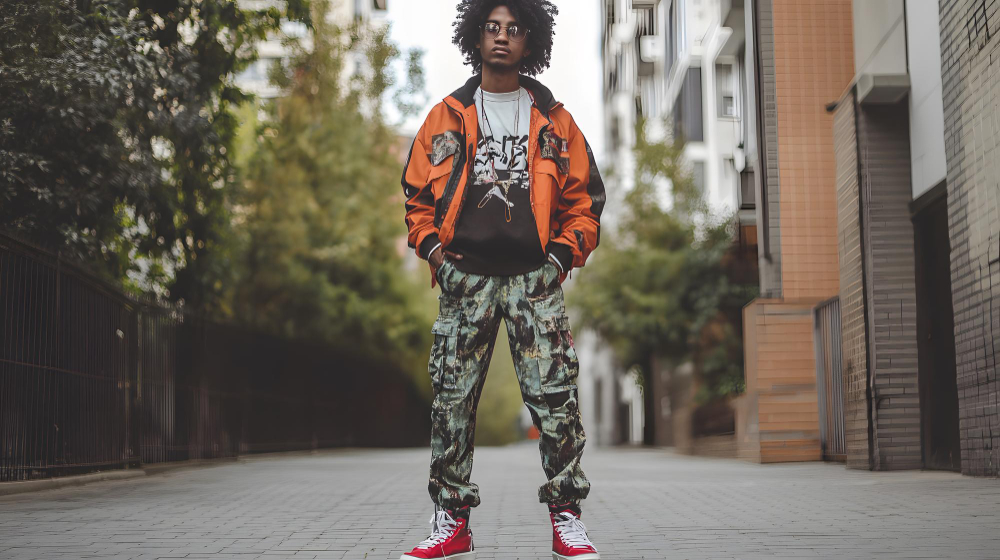
This is another strong category for camouflage print. The utilitarian feel of joggers aligns naturally with the military reference behind camo. Pieces usually look functional and stylish at the same time.
The print adds visual interest without being overwhelming, especially when combined with minimal tops.
Camo joggers appear across streetwear, athleisure, and casual collections. Elastic cuffs, cargo pockets, and technical fabrics enhance the design and make them practical.
Jacket
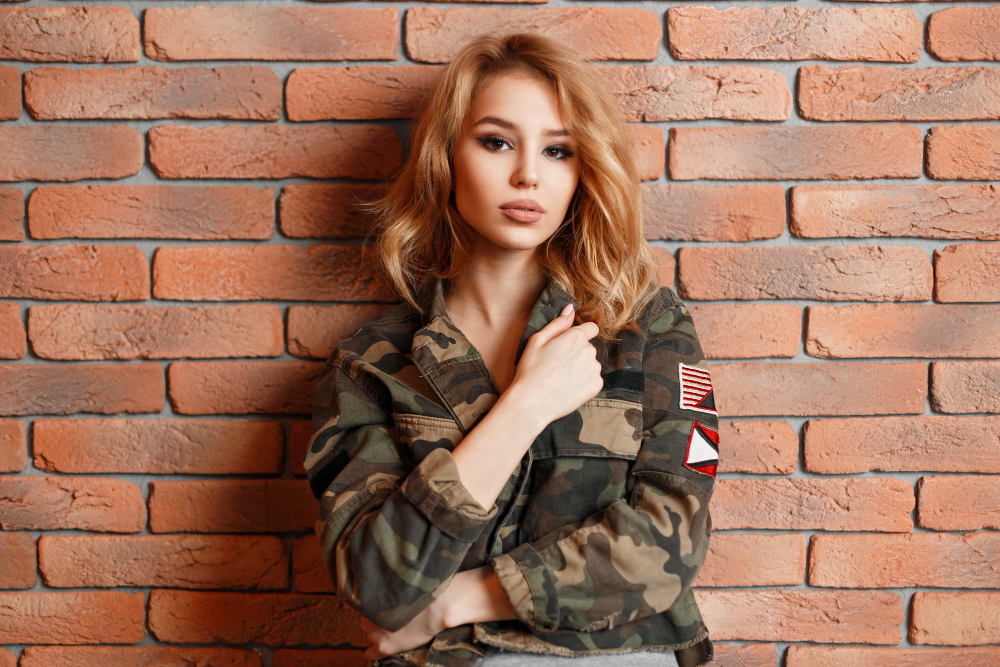
Camouflage jackets have a strong visual identity. They often serve as statement pieces and can transform simple outfits into bold looks. From bomber shapes to utilitarian outerwear, designers use camo to create garments that feel confident and memorable.
In fashion collections, camo jackets often feature additional elements like embroidery, patches, ripstop overlays, or contrasting textures.
These details highlight craftsmanship and give the piece even more character. As a result, camo jackets often become best sellers and collectible items.
Hoodie
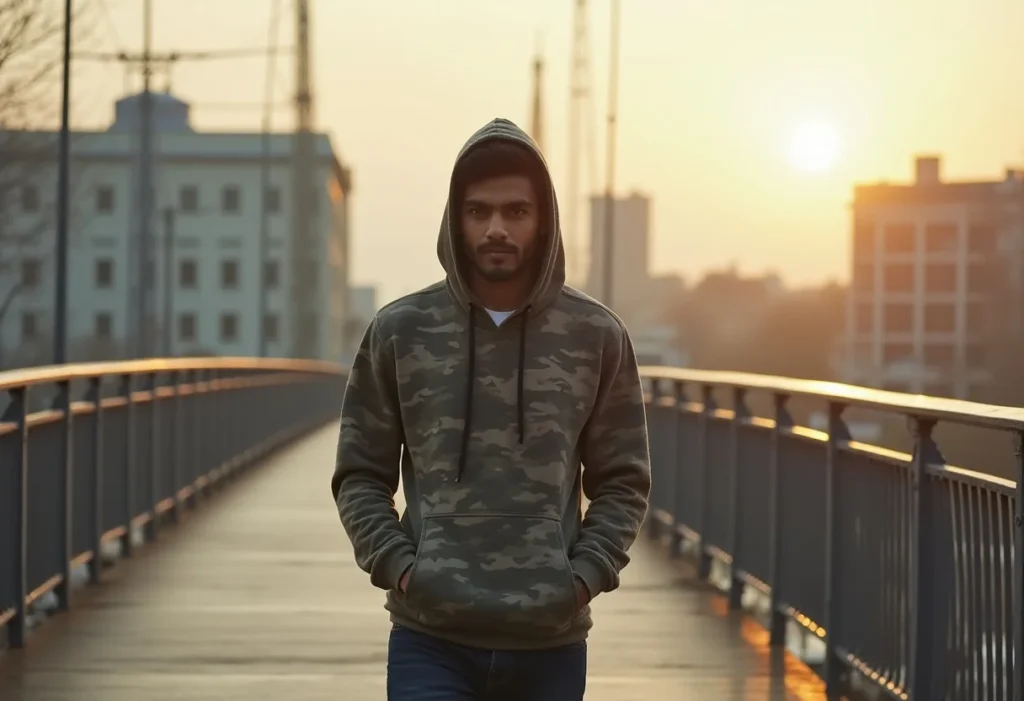
Hoodies combine the comfort of sportswear with the attitude of military-inspired fashion. They appeal to a wide audience because they balance casual energy with a distinctive print. The pattern gives a simple silhouette more presence and visual depth.
They show up in streetwear, casual winter collections, and activewear lines. Whether minimal or bold, camo hoodies stay relevant because they are easy to wear and pair well with neutral basics.
What is the origin of camouflage print?
Camouflage print originated from military needs, long before it became a fashion trend.
Throughout history, soldiers attempted to blend into the landscape using natural materials like mud, leaves, and branches.
The modern concept of printed camouflage began during World War I, when visual concealment became a strategic advantage. Artists and researchers worked together to study how shapes and colors could disrupt the human silhouette.
This collaboration gave birth to early camouflage designs that used bold patterns rather than simple solid tones. The approach evolved further during World War II and beyond, adapting to different terrains and combat conditions.
Once military surplus uniforms became accessible after the war, civilians began wearing them for practical purposes. Farmers, hunters, and workers used camo for protection and durability. Over time, these garments gained cultural meaning and entered music, street culture, and youth movements.
Eventually, camouflage became a symbol of rebellion, individuality, and personal expression. Designers recognized its emotional impact and incorporated it into fashion. From there, the print transitioned from military function to cultural and stylistic influence across decades.
How does camouflage appear on the runway?
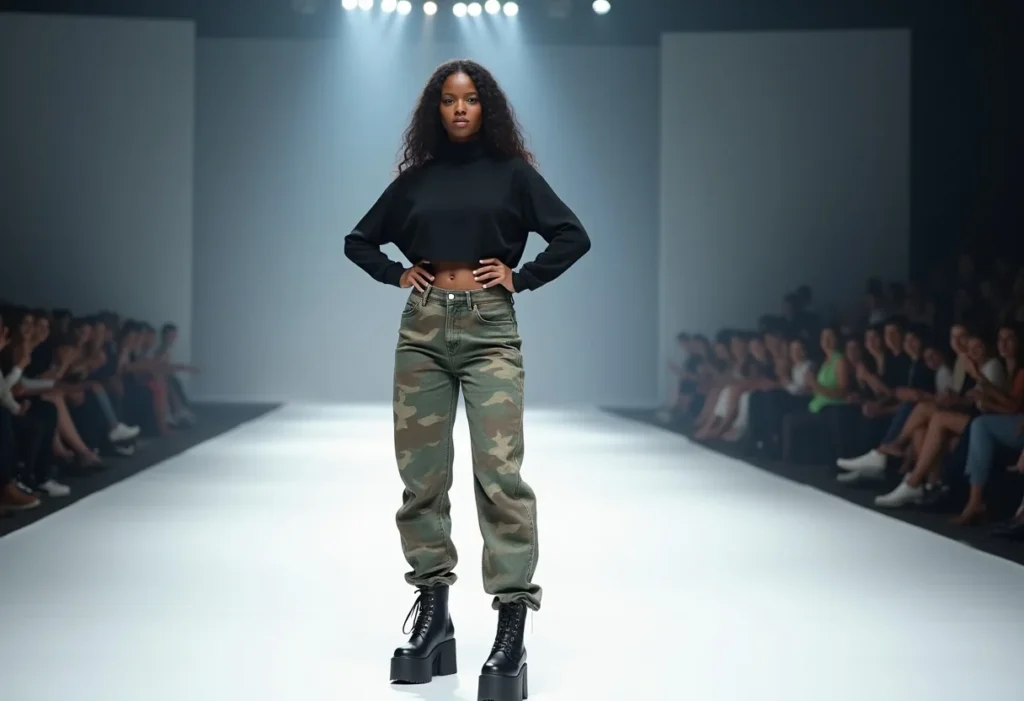
Colored camouflage
It offers a playful reinterpretation of the original pattern.
You can replace the traditional earthy tones with neon, pastel, or contrasting palettes. This creates pieces that feel fresh, youthful, and expressive, distancing the print from its utilitarian roots.
Camouflage and denim
They form a strong pairing because both have roots in utility and durability. When combined, they create garments that feel casual, functional, and street-inspired.
The contrast between printed surfaces and denim’s natural texture adds character and depth.
Read more: Uncover how fashion trends emerge and why you should keep up
Workwear camouflage
Workwear-inspired fashion embraces practicality, structure, and long-lasting materials. When camouflage print enters this context, it reinforces functionality while adding visual personality.
The result is clothing that feels rugged but stylish.
In collections, workwear camo appears in utility vests, carpenters pants, overshirts, and technical jackets. Details like reinforced seams, cargo pockets, and ripstop fabrics elevate durability while keeping the military influence visible.
How to add camouflage print to your designs digitally
This process becomes easier when you work with the right tools.
You can begin by creating or importing a camouflage texture and applying it as a fill pattern. Working with layers helps you adjust placement, scale, and blending without affecting the original drawing.
Audaces solutions make this process faster and more precise. With Audaces Idea, you can apply prints onto your flat sketches and experiment with variations in scale and color.
When you want to see the final effect on the garment, you can use Audaces Fashion Studio and design directly in 3D. This allows you to test colors, rotation, and scale in real time. It will help you reduce guesswork and see if the design needs refinement.
Elevate your collections with the support of Audaces360
Audaces Fashion Studio
Audaces Fashion Studio is a groundbreaking innovation for fashion designers within Audaces360 multisolution.
This innovative technology empowers professionals to create smarter sketches on a 3D mannequin. It provides tools and functionalities to enhance your design process.
Its features enable you to examine fit, drape, and movement in different body types. Explore fabrics, colors, textures, and apply prints in a few clicks.
Audaces Idea
Audaces Idea is your solution for creating and applying prints to your designs.
It helps end errors and streamline communication between design and the other teams. This way, you can reduce the development cycle and ensure timely deliveries.
Audaces Idea also includes integrated tech packs and automatic pre-cost calculations. You can visualize all your creation information on a single screen during the process.
Automating technical tasks frees up your time for more design exploration!
Audaces Sofia
Meet Audaces Sofia our cutting-edge fashion Artificial Intelligence. It helps you enhance your creations with an unlimited source of inspiration.
This solution has the power to transform concepts into reality in a matter of minutes. Some simple prompts are all you need to generate print variations.
Audaces Sofia integrates with Audaces Idea and Audaces Fashion Studio. This combination provides you with the complete solution to create effortlessly
Discover Audaces360 and unlock a world of possibilities for fashion design and production. Explore our comprehensive suite of solutions today!
FAQ
Camouflage print is a pattern originally designed to help military uniforms blend into different natural environments. As fashion evolved, camouflage began appearing beyond its original context.
They include woodland, urban, digital, chocolate chip, and multicam. Each one has its own characteristics and conveys different messages.
Camouflage print originated from military needs. Soldiers attempted to blend into the landscape using natural materials like mud, leaves, and branches.




